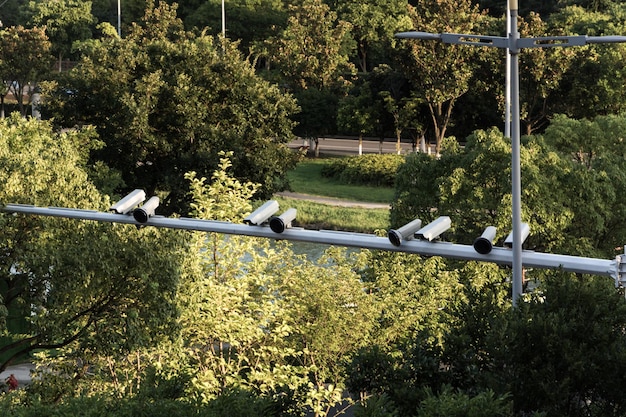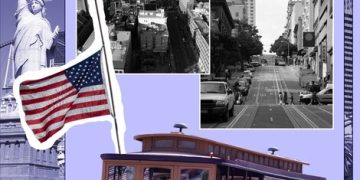How the Infrastructure Bill Will Drive US Economic Growth (2025-2030)

The Bipartisan Infrastructure Law, enacted in 2021, allocates \$1.2 trillion to modernize US infrastructure, aiming to boost economic growth by creating jobs, improving transportation, enhancing broadband access, and strengthening supply chains over the next five years.
The **how the new infrastructure bill will impact US economic growth over the next 5 years** is a complex question with potentially far-reaching implications. Understanding the planned investments and their expected ripple effects is crucial for businesses, investors, and the general public alike.
Decoding the Bipartisan Infrastructure Law
The Bipartisan Infrastructure Law (BIL), officially known as the Infrastructure Investment and Jobs Act, represents a significant commitment to upgrading America’s infrastructure. Enacted in November 2021, it allocates approximately \$1.2 trillion to various projects across the country. Understanding the scope and allocation of these funds is essential to forecasting its potential economic impact.
Key Investment Areas
The BIL targets several critical infrastructure areas. These investments are intended to address long-standing needs and create a more resilient and efficient foundation for economic growth.
- Transportation: A large portion of the funding is dedicated to improving roads, bridges, and public transportation systems. This includes repairs, modernization, and expansion projects.
- Broadband Internet: The bill aims to expand access to high-speed internet, particularly in rural and underserved areas. This is seen as crucial for education, healthcare, and economic development.
- Water and Wastewater Infrastructure: Investments are planned to upgrade water pipelines, treatment facilities, and wastewater systems. This will improve public health and environmental quality.
- Energy Infrastructure: The bill supports the development of clean energy technologies, grid modernization, and the decommissioning of abandoned mines and wells.

These investments are not just about repairing existing infrastructure; they are about building a foundation for future economic competitiveness. By addressing critical needs, the BIL aims to create jobs, improve productivity, and foster innovation. The scale of these investments is unprecedented in recent history, making it a significant factor in the US economic outlook.
Short-Term Economic Boost: Job Creation and Demand
One of the most immediate impacts of the infrastructure bill is its potential to create jobs and stimulate demand in the short term. The influx of government spending is expected to drive economic activity across various sectors.
The construction industry, in particular, is poised to benefit from the BIL. With numerous projects planned across the country, demand for construction workers, engineers, and related professionals is likely to increase. This could lead to higher wages and improved job security for those in the field.
Multiplier Effect
The impact of infrastructure spending extends beyond the construction industry. As projects get underway, demand for materials such as steel, concrete, and equipment will increase, benefiting manufacturers and suppliers. This creates a ripple effect throughout the economy.
Moreover, the workers employed on these projects will spend their earnings on goods and services, further stimulating demand. This “multiplier effect” can amplify the initial impact of government spending, leading to broader economic growth.
However, it’s important to acknowledge that the job creation impact may be gradual. Infrastructure projects often have long lead times, requiring planning, design, and permitting before construction can begin. This means that the full employment benefits may not be realized immediately. Additionally, labor shortages in the construction industry could potentially limit the pace of project implementation.
Long-Term Productivity Gains: Efficiency and Connectivity
The long-term benefits of the infrastructure bill extend beyond immediate job creation. The investments in transportation, broadband, and other areas are expected to enhance productivity and improve the overall efficiency of the US economy.
Transportation Improvements
Modernizing roads, bridges, and public transportation systems can reduce commute times, lower transportation costs, and improve supply chain efficiency. This can boost productivity for businesses and improve the quality of life for individuals.
Expanded Broadband Access
Expanding access to high-speed internet, particularly in rural areas, can unlock new economic opportunities. It enables businesses to reach new markets, facilitates remote work, and improves access to education and healthcare. This can lead to higher incomes and improved living standards.
- Increased Business Productivity: Enhanced internet connectivity allows businesses to adopt new technologies, streamline operations, and access a wider pool of talent.
- Improved Education and Healthcare: Broadband access enables online learning, telemedicine, and other services that can improve educational outcomes and healthcare access.
- Economic Development in Rural Areas: Expanded broadband access can attract new businesses to rural areas, creating jobs and diversifying local economies.

These long-term productivity gains are crucial for sustaining economic growth. By improving infrastructure, the US can become more competitive in the global economy and attract new investment. While the immediate impact of the infrastructure bill may be significant, its long-term effects could be even more transformative.
Potential Challenges and Risks
While the infrastructure bill holds significant promise, it’s important to acknowledge the potential challenges and risks that could impact its effectiveness.
Inflationary Pressures
Increased government spending could contribute to inflationary pressures. If demand for goods and services outpaces supply, prices may rise, eroding the purchasing power of consumers and businesses. It’s important for policymakers to monitor inflation and take steps to mitigate its impact.
Supply Chain Bottlenecks
Supply chain disruptions could delay project implementation and increase costs. Shortages of materials such as steel and concrete could slow down construction and lead to cost overruns. Addressing these bottlenecks will be crucial for ensuring the timely completion of infrastructure projects.
Implementation Challenges
Effectively managing and implementing infrastructure projects is a complex undertaking. Bureaucratic delays, permitting issues, and coordination challenges can all slow down progress. Streamlining processes and improving coordination among government agencies will be essential for maximizing the impact of the infrastructure bill.
These challenges highlight the need for careful planning, monitoring, and adaptation. Policymakers must be proactive in addressing potential risks and ensuring that the infrastructure bill achieves its intended goals.
Sector-Specific Impacts: Winners and Losers
The infrastructure bill is likely to have varying impacts on different sectors of the US economy. Some sectors are poised to benefit significantly, while others may face challenges.
Construction and Engineering
As previously noted, the construction and engineering sectors are likely to be among the biggest winners. The influx of infrastructure projects will create significant demand for their services. Companies with expertise in transportation, water, and energy infrastructure are particularly well-positioned to benefit.
Technology and Telecommunications
The expansion of broadband access will create new opportunities for technology and telecommunications companies. Companies that provide internet services, develop networking equipment, and create digital content are likely to see increased demand.
Manufacturing
Manufacturers of construction materials, equipment, and transportation vehicles will benefit from the infrastructure bill. Demand for steel, concrete, machinery, and other products is expected to increase as projects get underway.
Sectors that may face challenges include those that are heavily reliant on fossil fuels. The bill’s emphasis on clean energy technologies could lead to decreased demand for oil, gas, and coal. Companies in these industries may need to adapt their business models to thrive in a changing energy landscape.
Regional Disparities: Impact on Different States
The impact of the infrastructure bill will likely vary across different states, depending on their infrastructure needs and project priorities.
States with aging infrastructure and significant transportation challenges are likely to benefit the most. These states may receive a larger share of funding for road, bridge, and public transportation projects. States with large rural populations may also benefit from the expansion of broadband access.
However, some states may face challenges in accessing and utilizing the funds. States with limited administrative capacity or complex regulatory environments may find it difficult to implement projects in a timely manner. It’s important for states to develop robust project management capabilities and streamline their processes to maximize the benefits of the infrastructure bill.
| Key Point | Brief Description |
|---|---|
| 🏗️ Job Creation | Infrastructure projects will generate jobs in construction, engineering, and related fields. |
| 🌐 Broadband Expansion | Increased access to high-speed internet, particularly in rural areas. |
| ⚡ Energy Modernization | Investments in clean energy technologies and grid improvements. |
| 🚚 Supply Chain Efficiency | Transportation improvements aim to reduce delays and lower costs. |
Frequently Asked Questions
▼
The Bipartisan Infrastructure Law (BIL) is a \$1.2 trillion investment in US infrastructure, aiming to modernize roads, bridges, broadband, water systems, and energy grids.
▼
It is expected to create jobs in construction, engineering, manufacturing, and technology sectors through various infrastructure projects nationwide.
▼
Key investments include transportation, broadband internet, water and wastewater infrastructure, and energy infrastructure modernization projects.
▼
Potential challenges include inflationary pressures, supply chain bottlenecks, and effective project implementation and management issues.
▼
Rural areas will benefit from expanded broadband access, improved infrastructure, and increased economic opportunities through enhanced connectivity
Conclusion
The Bipartisan Infrastructure Law represents a historic opportunity to modernize US infrastructure and drive economic growth. While the bill faces potential challenges, its investments in transportation, broadband, and other areas are expected to boost productivity, create jobs, and improve the quality of life for Americans over the next five years.





